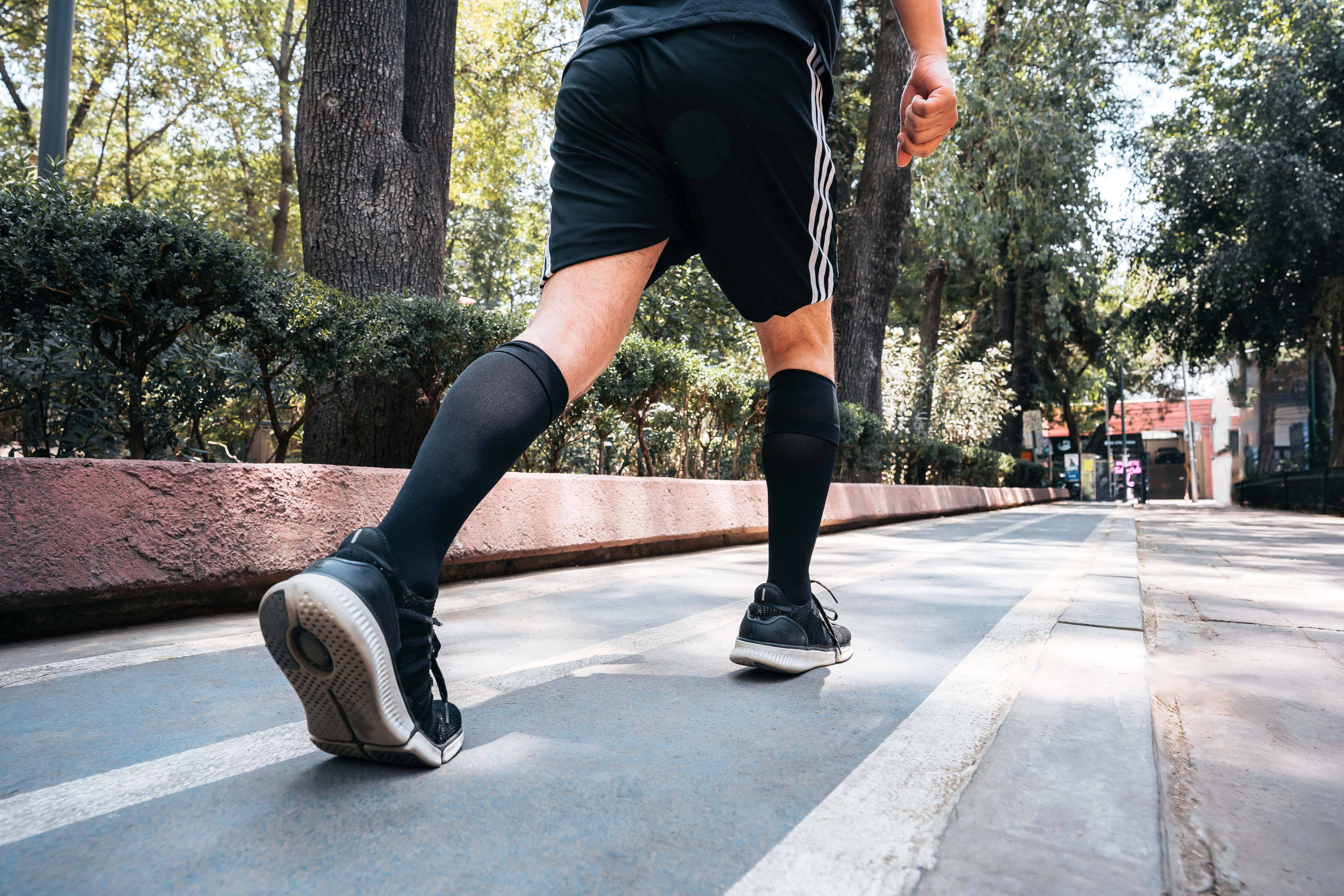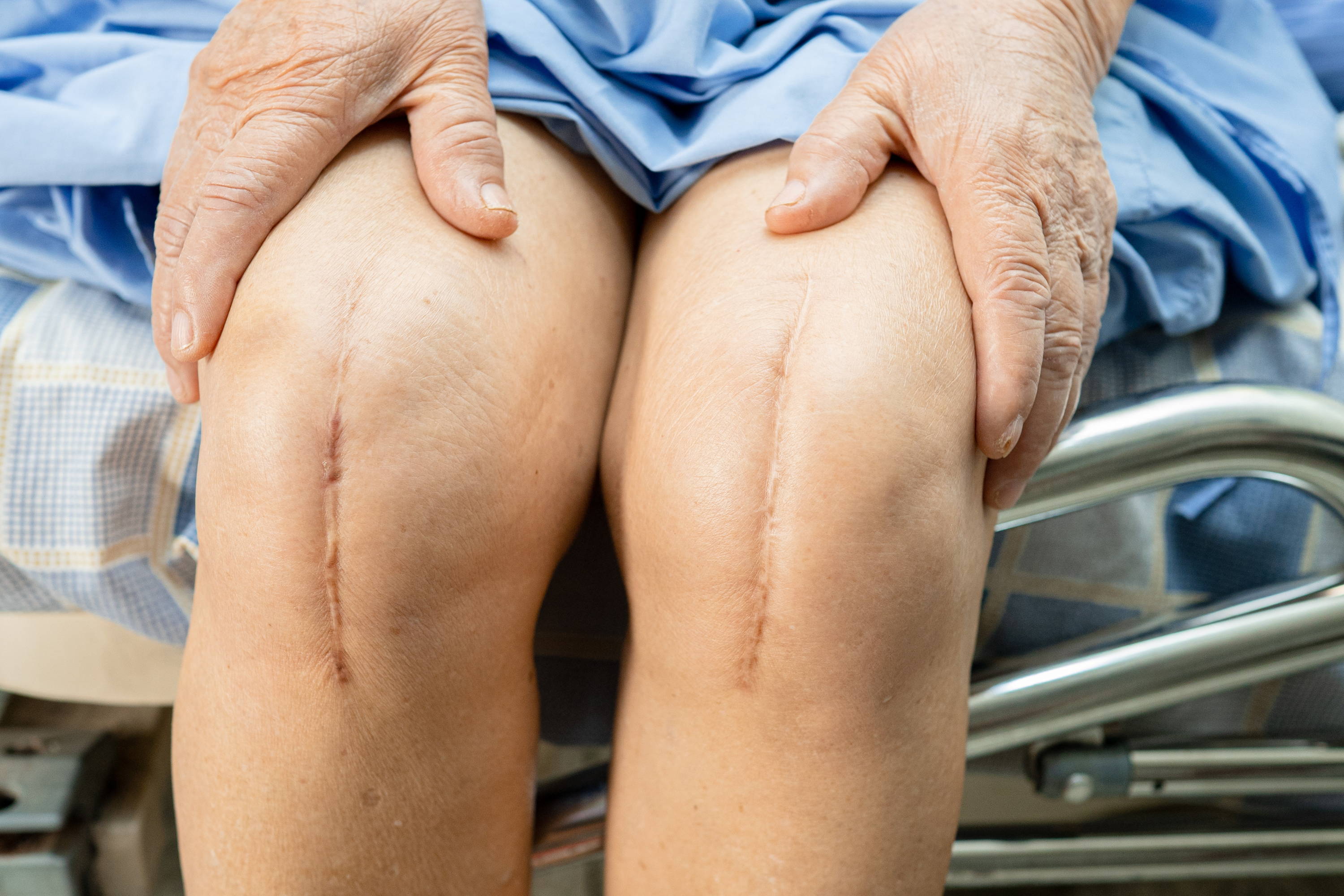
How Tight Should Compression Socks Be For Therapeutic Purposes?
May 29,2023 | 3 Mins Read
TABLE OF CONTENTS
Compression socks are a type of compression garments which ultimate goal is to improve blood circulation in the legs. They should feel tight around your legs. You will feel the most pressure around your ankles with less pressure further up the leg.
To answer the question "how tight are compression socks supposed to be?", the bottom-line answer is - just tight enough. No skin-irritation. No constrictive swelling. Just the right amount of compression to promote healthy blood flow, reduce fatigue and strain, and alleviate pain.
The Koprez compression socks are designed with medical-grade compression, backed with evidence-based therapeutic benefits, and engineered for maximum comfort.
Absolutely, compression socks are meant to be snug or tight to some degree. The whole principle behind compression socks is the application of compression therapy - graduated pressure to the legs, ankles and feet.
Think about it like a gentle, supportive hug for your legs. This pressure is strongest at the ankle and gradually lessens as it goes up the leg, helping to guide the flow of blood back towards the heart.
But here's the thing: while compression socks are meant to be tight, they shouldn't be painfully or uncomfortably so. It's a delicate balance. If they're causing discomfort, digging into your skin, or leaving deep indentations, they're probably too tight and you might need a different size or compression level.
In short, yes, compression socks are supposed to be tight—but in a supportive, beneficial way, not in a painfully tight way.

Before you purchase compression socks, it’s important to know the compression level.
MmHg, or millimeters of mercury, is the measurement used to determine compression rating. This rating indicates how much pressure is applied by the sock when worn (rated from 8-50 mmHg).
A higher number indicates more pressure, while a lower number indicates less pressure and a looser fit. Compression ratings should always be considered in conjunction with your activity level or the condition you have.
The most common compression level for everyday activities and light sports. 8-15 mmHg is considered a light compression and also the cheapest variety you can find in a medical supply store. Physicians recommend this type of compression level for people with minor circulatory or vein issues, or those who spend most of their day sitting or standing.
We consider this the therapeutic level of compression. In fact, many physicians recommend the medium compression level for those with spider veins, varicose veins, mild to moderate edema (swelling), and circulatory problems. This type of compression is also commonly used by athletes to improve athletic performance during light training sessions or low-intensity activities such as walking, jogging, or biking.
Firm compression recommended for treating swelling in the legs, severe varicose veins, deep vein thrombosis, and preventing orthostatic hypotension (when the blood pressure drops when you stand up from a sitting or lying down position) and blood clots post-surgery.
Those undergoing physical therapy often use this compression sock level to reduce inflammation, improve blood circulation, and speed up the recovery process.
Extra firm compression for severe swelling, chronic venous insufficiency, pregnant women with phlebitis (vein inflammation), dermatitis sufferers, and managing more advanced venous disorders.
Very high compression reserved for severe lymphatic or venous insufficiency, typically recommended by healthcare professionals. This high level of compression is normally used for very short periods to prevent worsening of symptoms, and should not be worn continuously.
Accurate measurement and the activity you will be engaging in are the two important considerations when determining the appropriate compression level.
With the right compression level, you can garner all the benefits that compression socks has to offer.
When it comes to travel, especially long flights, it's common to experience tingling and fatigue in the legs. To minimize these symptoms, it's best to opt for compression socks for flying or compression stockings with 15-20 mmHg of compression.
Wearing compression socks for pregnancy with a level of 30-40 mmHg is often recommended for those who suffer from varicose veins or edema (swelling) during pregnancy.

If you've recently undergone surgery, your healthcare professional may prescribe a compression level of 30-40 mmHg to promote healthy circulation and reduce the risk of developing blood clots or other complications.
Read this guide to learn how long you should wear compression socks after surgery.
Nurses, factory workers, and other occupations requiring long hours of standing may need to wear compression socks for extended periods. In this case, we recommend a moderate compression level of 15-20 mmHg or a firm compression level between 20-30 mmHg.
Compression socks can also be beneficial in managing the discomfort associated with plantar fasciitis. We suggest wearing a compression level between 15-20 mmHg or 20-30 mmHg to relieve tension and reduce inflammation.
Runners often rely on compression socks to reduce muscle fatigue and soreness. Compression socks for running should offer a moderate level of compression between 15-20 mmHg or 20-30 mmHg.
Edema is a condition that causes fluid to accumulate in the legs and feet. Compression socks can help reduce swelling and discomfort associated with edema. A moderate level of compression between 15-20 mmHg or 20-30 mmHg should provide adequate support and relief.
To ensure you're wearing the right size and fit of compression socks, watch out for the following signs:
Too tight compression socks can manifest in a variety of ways. Signs that your compression sock may be too tight include the following:
Yes, both compression socks and graduated compression stockings (also known as pressure stockings or anti-embolism stockings) are designed to provide similar benefits, though they might be used for slightly different purposes or target different areas of the legs.
Both compression stockings and compression socks and work by applying pressure to your legs and feet to improve blood flow. This can help prevent deep vein thrombosis (DVT), reduce swelling in the leg veins, and relieve pain or discomfort related to various vascular conditions.
Read this guide an extensive difference between compression socks and stockings.
If you're certain you have the right size but the compression socks still feel too tight, it could be due to the level of compression. If the socks feel too tight, you may need a lower compression level. If adjusting the compression level doesn't help, it could be a sign that the socks are not being worn correctly. Make sure they are evenly pulled up and not bunched or wrinkled.
Before anything else, make sure to read our comprehensive guide on how to measure for compression socks properly and accurately.
Compression socks should be tighter at the bottom and gradually decrease in compression as they move up the leg. This graduated compression helps push blood up from your ankles and legs back towards your heart. It's important that the socks are not too tight at the top, as this can cut off circulation.
Yes, you can wear compression socks all day. They are designed to provide sustained pressure on your legs to help improve blood flow, reduce swelling, and alleviate pain. Many people wear compression socks throughout their day-to-day activities, including during work and exercise.
However, it's generally recommended to remove them before going to bed, unless specifically advised otherwise by your healthcare provider. This is because the pressure exerted by the socks is not necessary when you're lying down.
If you're between sizes, it's generally better to size up rather than down. Compression socks that are too small can cause discomfort, restrict blood flow, and even lead to skin irritations.
Read this guide to learn how to measure for compression socks.
It's common for compression socks to leave temporary indentations on your legs, especially if you've been wearing them for an extended period. However, if the indentations are deep, painful, or persist for an unusually long time after removing the socks, it may be a sign that the socks are too tight and you should consider a different size or compression level.
It's normal to experience temporary discoloration after wearing compression socks, especially if the socks are too tight. Discoloration usually fades shortly after removing the socks and isn't a cause for concern. However, if you have persistent discoloration or any other concerning symptoms, consult with your healthcare provider as soon as possible.
References
Author

Claire Evans worked as the content marketing manager at Koprez. Claire combined a background of writing and editing, marketing, and patient education to best serve consumers, fitness enthusiasts, athletes, and anyone who relies on the Koprez brand for helpful information.
Koprez® Featured Products